Submitted:
29 April 2023
Posted:
29 April 2023
You are already at the latest version
Abstract
Keywords:
1. Introduction
2. Background
2.1. Hydrotherapy
2.2. Lifestyle change and Design for behaviour change
3. Conceptual Framework and Methodology
3.1. Objectives tree method
3.2. TRIZ theory
3.3. Morphological chart method
3.4. PUGH method
4. Case Study
4.1. Market research
4.2. Design specification
4.3. Development strategies
4.4. TRIZ theory
4.5. Component development
4.6. Concept development
4.7. Concept Selection and Evaluation
5. Conclusion
References
- Lin, M., Hughes, B., Katica, M., Dining-Zuber, C., & Plsek, P. Service design and change of systems: Human-centered approaches to implementing and spreading service design. Int. J. Des., 2011, 5(2), 73-86.
- Kim, M. A study of dignity as a principle of service design. Int. J. Des., 2021, 15(3), 87-100.
- Niedderer, K., Ludden, G., Clune, S. J., Lockton, D., Mackrill, J., Morris, A., Cain, R.,Gardiner, E., Evans M., Gutteridge, R., Hekkert, P. Design for Behaviour Change as a Driver for Sustainable Innovation: Challenges and Opportunities for Implementation in the Private and Public Sectors. Int. J. Des., 2016, 10(2), 67-85.
- Brooker, D. Person-centred dementia care: Making services better, Jessica Kingsley: London, UK, 2007.
- Greer, J. A., Pirl, W. F., Park, E. R., Lynch, T. J., & Temel, J. S. Behavioral and psychological predictors of chemotherapy adherence in patients with advanced nonsmall cell lung cancer. J. Psychosom. Res., 2008, 65(6), 549-552. [CrossRef]
- Andrykowski, M. A. The role of anxiety in the development of anticipatory nausea in cancer chemotherapy: A review and synthesis. Psychosom. Med., 1990, 52(4), 458-475. [CrossRef]
- Latini, D. M., Hart, S. L., Knight, S. J., Cowan, J. E., Ross, P. L., Duchane, J., & Carroll, P. R. The relationship between anxiety and time to treatment for patients with prostate cancer on surveillance. Urol. J., 2007,178(3), 826-832. [CrossRef]
- Mullaney, T., Pettersson, H., Nyholm, T., Stolterman, E. Thinking beyond the Cure: A Case for Human-Centered Design in Cancer Care. Int. J. Des., 2012, 6(3), 27-39.
- Kwaku, A. G. & Wei, Y. The Vital Role of Problem-Solving Competence in New Product Success. J. Prod. Innov. Manage., 2011, 28(1), 81-98.
- Cooper, R. G. & Kleinschmidt, E. J. New Products: The Key Factors in Success. Marketing Classics Press: USA, 2011.
- uey, L. The Waterpower Workout: The Stress-Free Way for Swimmers and Non-Swimmers Alike to Control Weight, Build Strength and Power, Develop Cardiovas. Doppelgang Press: USA, 2019.
- Glenn, J. M. Deep Water Exercise for Health and Fitness. Publitec Editions: Laguna Beach, Calif, 1988.
- Poteat, S. A. Justifiable aquatic therapy: scientific support for intervention, neurological and neurosurgical population. In Congresboek: Hydrotherapie van pracice based naar evidence based. Lambeck, J., Bult, H., Eds.; Amersfoort: Nederlands paramedisch Instituut, 1999.
- Aquatic Therapy and Rehab Institute, Inc. Available online: http://ruthsova.com (accessed on 5 June 2022).
- Lambeck, J. Hydrotherapy in adult neurology. EWAC Medical. Available online: https://www.ewacmedical.com/ (accessed on 25 June 2022).
- Mutz, M. & Markus Gerke. Sport and exercise in times of self-quarantine: How Germans changed their behaviour at the beginning of the Covid-19 pandemic. Int. Rev. Sociol. Sport, 2021, 56(3), 305–316. [CrossRef]
- Mattioli, A.V., Sciomer, S., Cocchi, C., Maffei, S., Gallina, S. Quarantine during COVID-19 outbreak: changes in diet and physical activity increase the risk of cardiovascular disease. Nutr. Metabol. Cardiovasc. Dis, 2020, 30(9) ,1409–1417. [CrossRef]
- Serpanou, I., Sakellarib, E., Psychogioud, M., Zygae, S., Sapountzi-Krepiaf, D. Physical therapists’ perceptions about patients with incomplete post-traumatic paraplegia adherence to recommended home exercises: a qualitative study. Braz. J. Phys. Ther., 2018, 23(1), 33-40.
- Kylén, M., Ytterberg, C., von Koch, L., Elf, M. How is the environment integrated intopost-stroke rehabilitation? A qualitative study among community-dwelling persons with stroke who receive home rehabilitation in Sweden. Health Soc. Care Community, 2022, 30, 1933–1943.
- Haik, Y., Shahin, T. M. M. Engineering Design Process. Cengage Learning: USA, 2010.
- Altshuller, G. 40 Principles: TRIZ keys to technical innovation. Technical Innovation Center: Worcester, 2002.
- Roozenburg, N. F. M., Eekels, J. Product Design: Fundamentals and Methods. Utrecht: Lemma, 1995.
- Cross, N. Engineering Design Methods. Chichester: Wiley, 1989.
- Ullman, D. G. A Taxonomy for Classifying Engineering Decision Problems and Support Systems. Artif. Intell. Eng. Des. Anal. Manuf., 1996, 9, 427-438. [CrossRef]
- Pugh, S. Total Design: Integrated Methods for Successful Product Engineering. Addison Wesley: UK, 1991.
- Pevonia. Available online:https://www.giftedtouch.com/900120.html#.YvRwHuxBw-x (accessed on 18 January 2022).
- Ever Prosperous Instruments, Inc. Available online: http://www.epii.com.tw/WebMaster/?module=mall&func=ProductsDetail&prod_id=117&parent_id=0&bid= (accessed on 15 May 2022).
- Jengshin. Available online: http://www.jengshin.com/js/date_in.php?id=1750(accessed on 27 July 2022).
- Natural Create inc. Available online: https://water-walker.jp/en/index.html(accessed on 19 March 2022).
- YAHO. Available online: https://www.yao-hong.com.tw/(accessed on 4 November 2022).
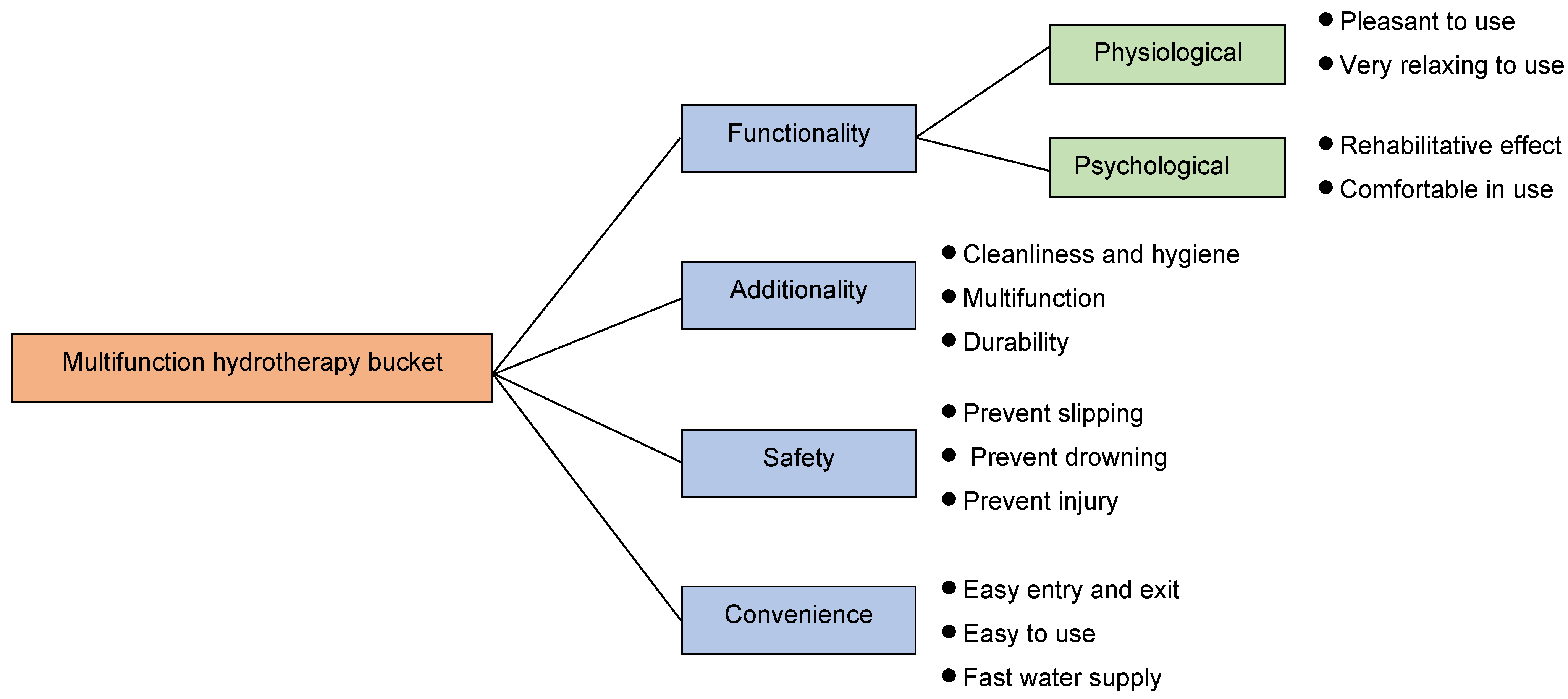
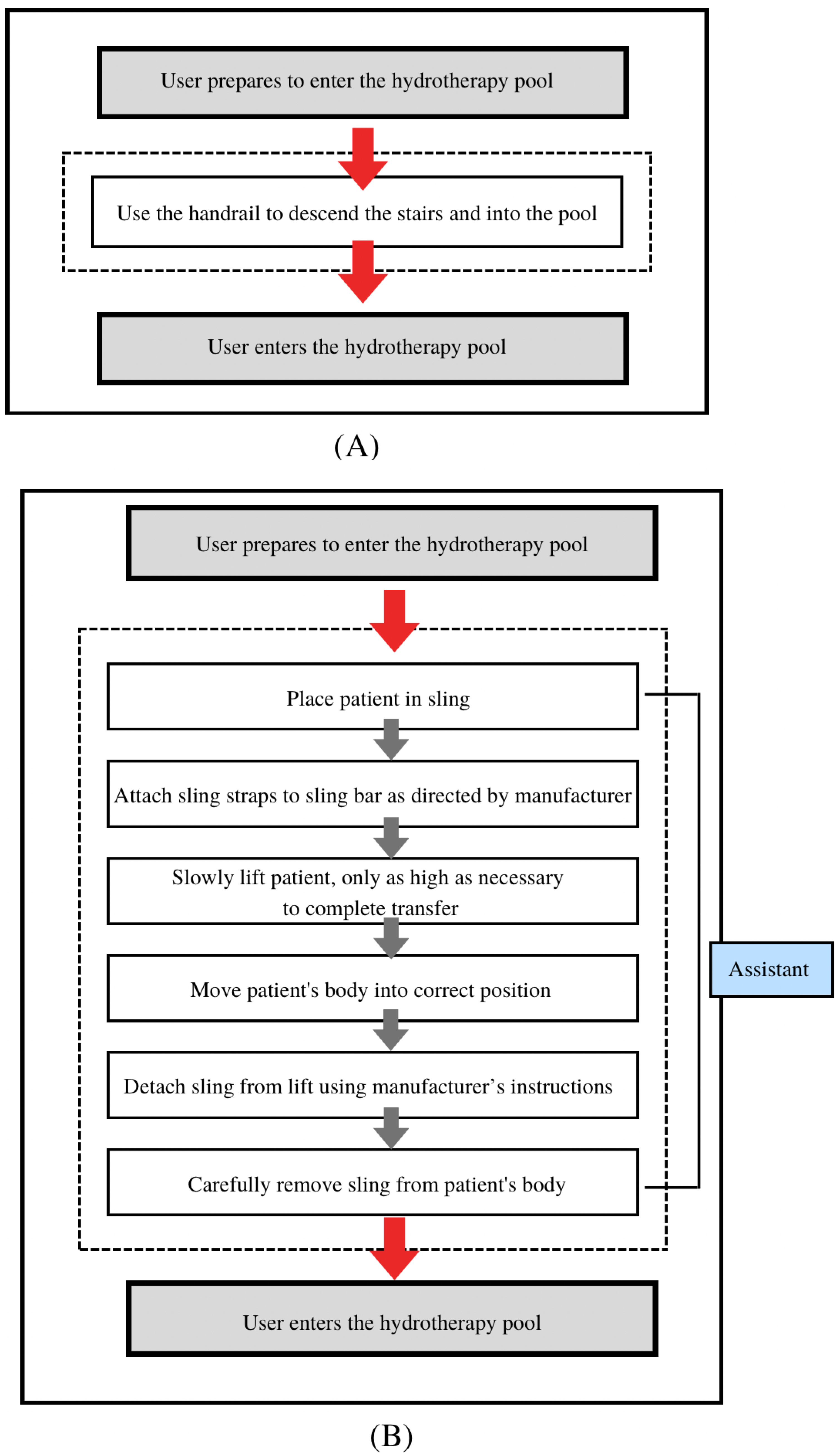
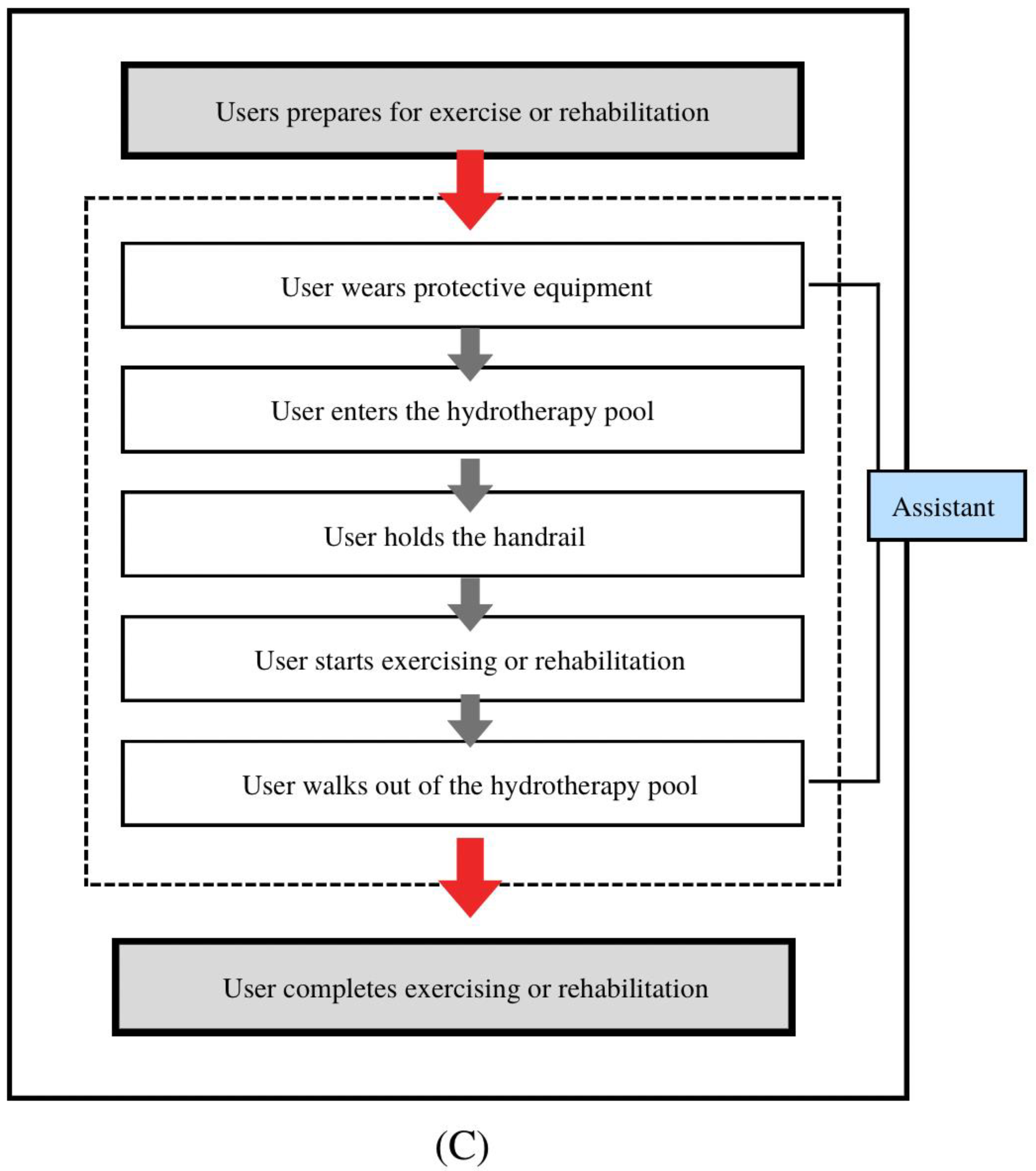
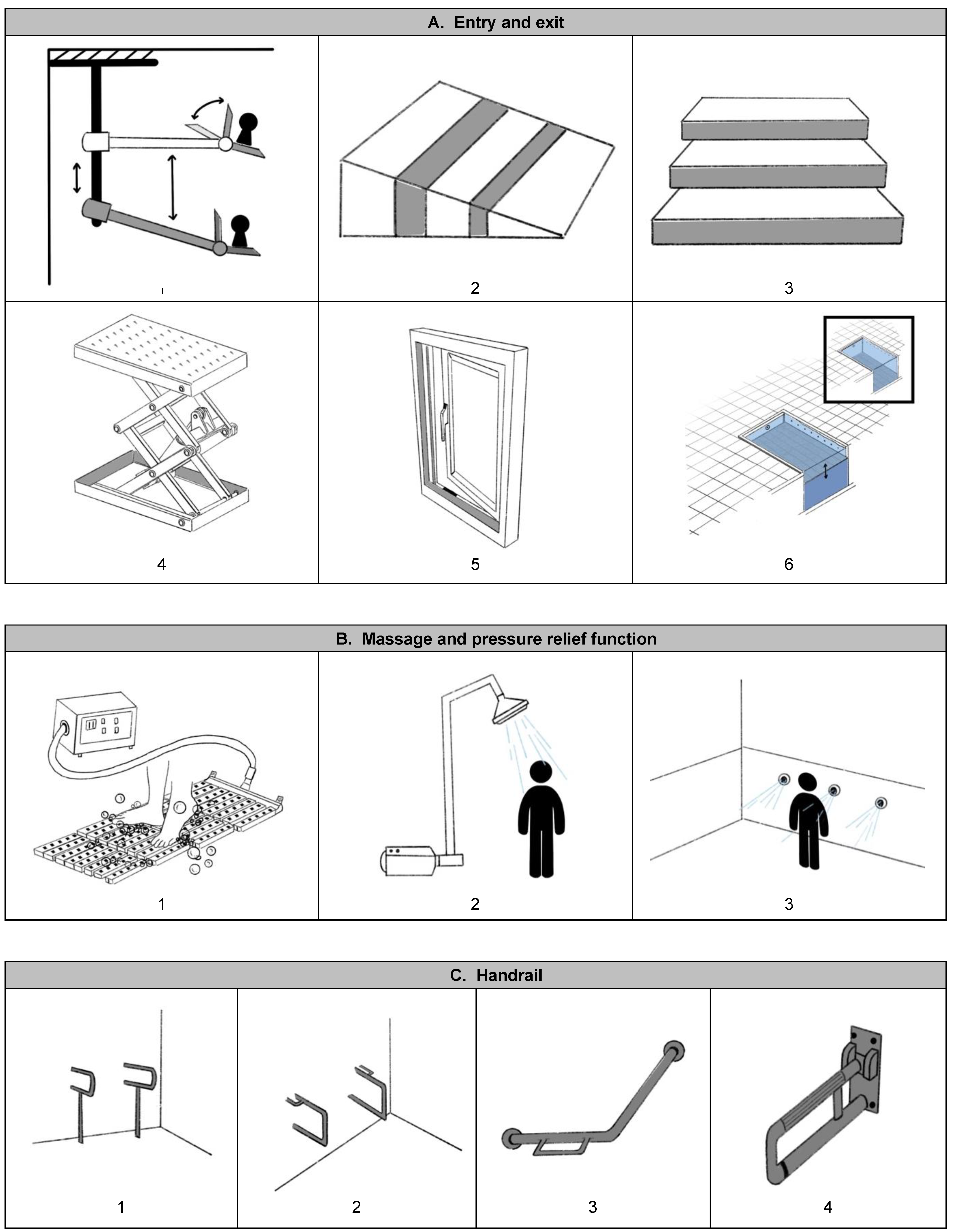

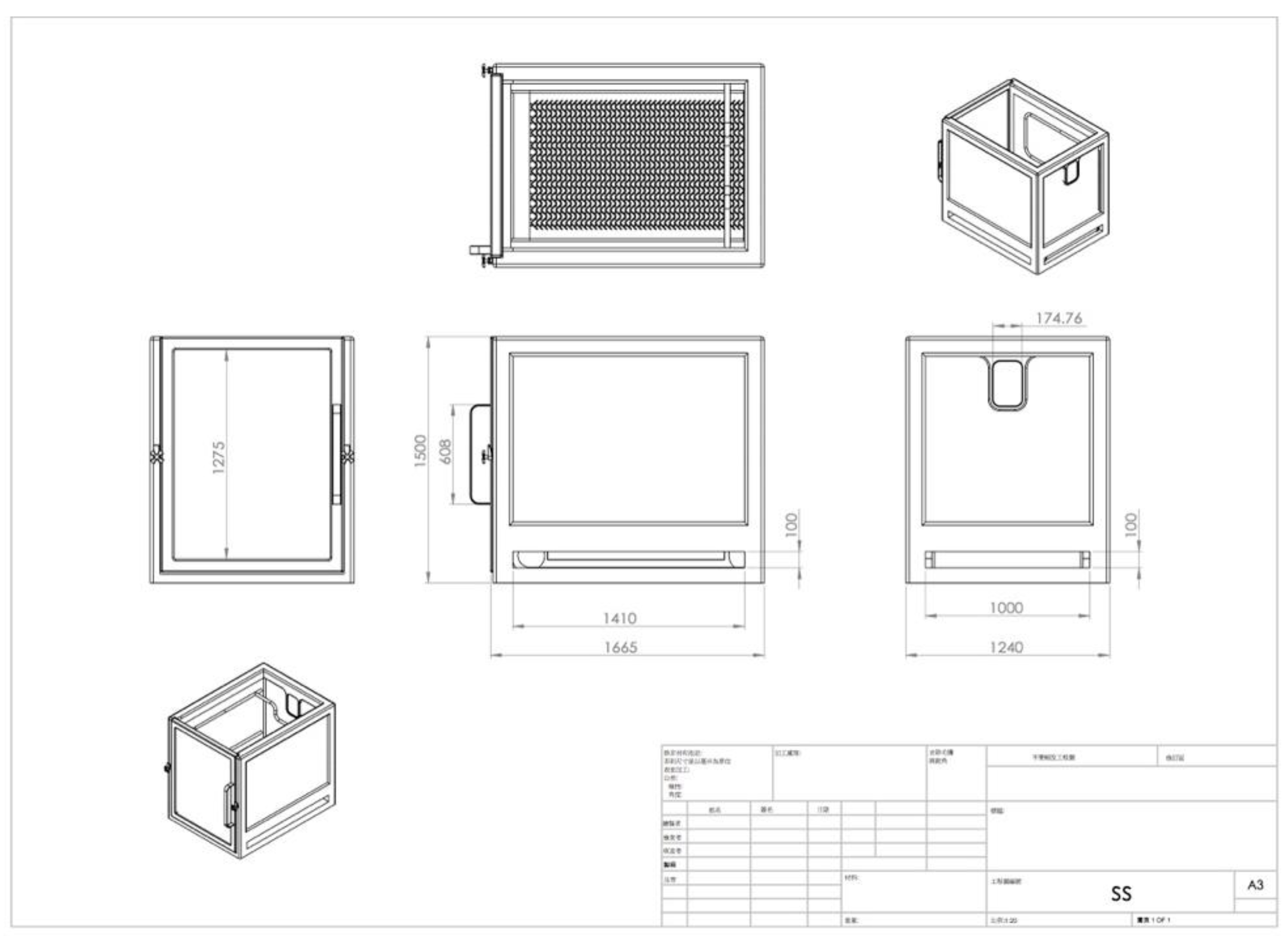
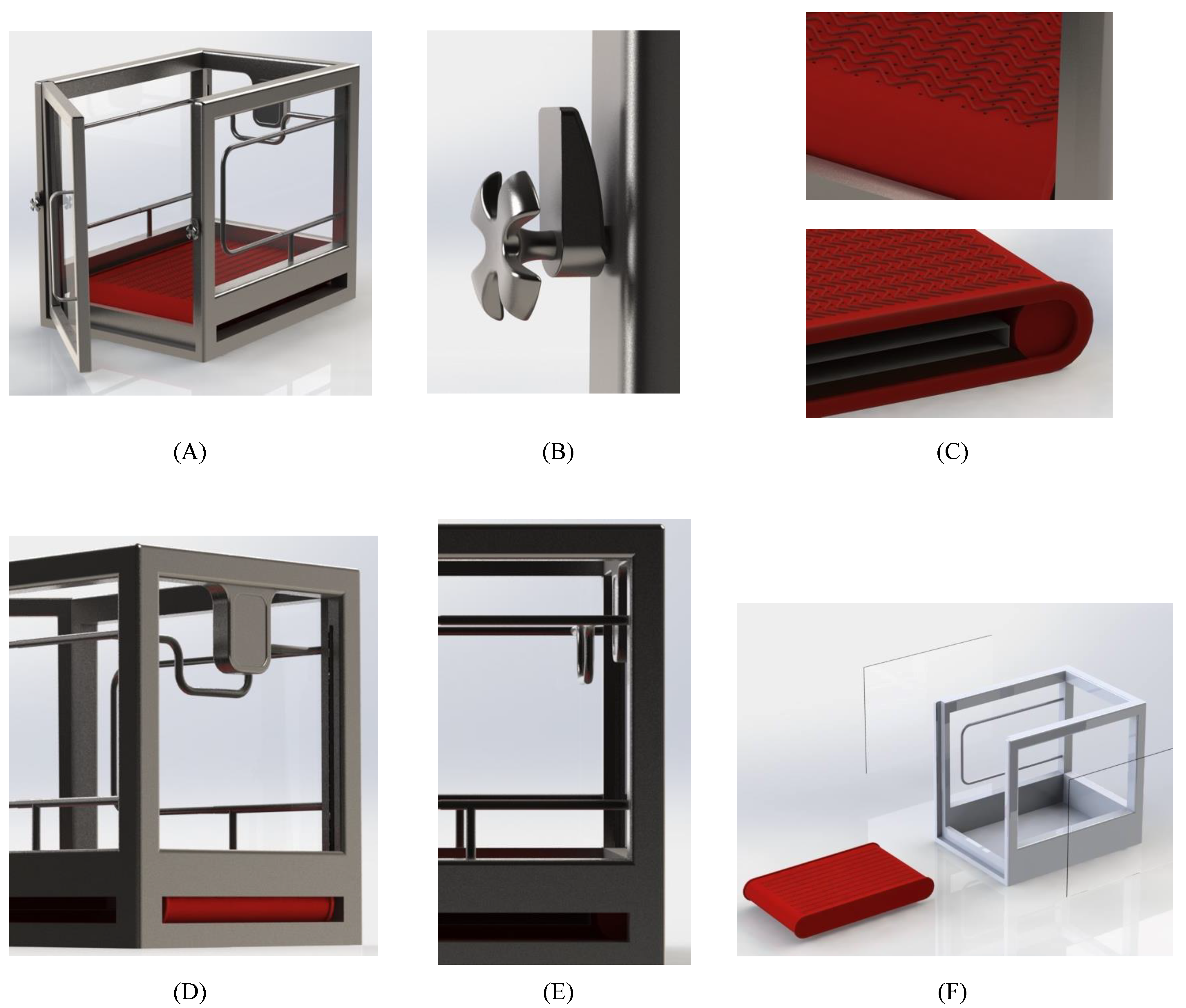
| Brand | Pevonia | Ever Prosperous | Jengshin | Natural Create | YAHO |
 |
 |
 |
 |
 |
|
| Type | Capsule | Immersion barrel | Upper body barrel | Running type | Lower extremity type |
| Feature | 1.Digitally Controlled 2.NHydrotherapy, Tub Wet table, Steam, Vichy shower |
Using the linear velocity of water flow and ultrasonic equivalent | Comes with four 4 brake wheels |
Users can run in the bucket | Chair style with wheels |
| Size | L: 223.5cm W:119.4cm H: 51 129.5cm Weight: 179.6kg |
L: 71cm W: 38cm H: 46cm Motor Weight: 2 kg |
L: 71cm W: 38cm H: 51cm |
L: 238cm W:120cm H: 51 180cm Weight: 300kg |
L: 70cm W:68cm H: 123cm |
| Material | Acrylic resin | Stainless Steel | Stainless Steel | Acrylic resin | Stainless Steel |
| Functionality | Additionality | Safety | Convenience | ||||
| Pleasant to use | W | Cleanliness and hygiene | D | Prevent slipping | D | Easy entry and exit | D |
| Very relaxing to use | W | Multifunction | D | Prevent drowning | D | Easy to use | D |
| Rehabilitative effect | D | Durability | D | Prevent injury | D | Fast water supply | W |
| Comfortable in use | W | ||||||
| (A) Single function type for single person | (B) Multifunction type for single person type |
|---|---|
| A6_B2_C3_D3 | A5_B3_C1_D2 |
| (C) Convenience type | (D) Combination storage type |
| A4_B3_C3_D2 | A5_B1_C2_D1 |
| Design Criteria | 1 | 2 | 3 | 4 | 5 | 6 | 7 | 8 |
Design Criteria Total Score |
Weight |
|---|---|---|---|---|---|---|---|---|---|---|
| 1 | 5 | 4 | 3 | 2 | 5 | 3 | 3 | 25 | 0.10 | |
| 2 | 3 | 3 | 2 | 3 | 2 | 1 | 1 | 15 | 0.07 | |
| 3 | 4 | 5 | 2 | 3 | 2 | 1 | 1 | 18 | 0.08 | |
| 4 | 5 | 6 | 6 | 5 | 4 | 4 | 5 | 35 | 0.16 | |
| 5 | 6 | 5 | 5 | 3 | 3 | 3 | 4 | 29 | 0.13 | |
| 6 | 3 | 6 | 6 | 4 | 5 | 4 | 4 | 33 | 0.15 | |
| 7 | 5 | 7 | 7 | 4 | 5 | 4 | 5 | 37 | 0.17 | |
| 8 | 5 | 7 | 7 | 3 | 4 | 3 | 3 | 32 | 0.14 | |
| Total Score | 224 | 1 |
| Design Criteria | Concept A | Concept B | Concept C | Concept D | Weight | |
|---|---|---|---|---|---|---|
| 1 | D A T U M |
S | S | S | S | 0.10 |
| 2 | S | S | S | S | 0.07 | |
| 3 | S | + | + | + | 0.08 | |
| 4 | - | S | + | + | 0.16 | |
| 5 | - | S | S | + | 0.13 | |
| 6 | - | - | - | - | 0.15 | |
| 7 | + | + | + | + | 0.17 | |
| 8 | - | S | + | + | 0.14 | |
| + Score | 0.17 | 0.25 | 0.55 | 0.68 | ||
| - Score | 0.58 | 0.15 | 0.15 | 0.15 | ||
| Total Score | -0.41 | 0.1 | 0.34 | 0.53 |
Disclaimer/Publisher’s Note: The statements, opinions and data contained in all publications are solely those of the individual author(s) and contributor(s) and not of MDPI and/or the editor(s). MDPI and/or the editor(s) disclaim responsibility for any injury to people or property resulting from any ideas, methods, instructions or products referred to in the content. |
© 2023 by the authors. Licensee MDPI, Basel, Switzerland. This article is an open access article distributed under the terms and conditions of the Creative Commons Attribution (CC BY) license (http://creativecommons.org/licenses/by/4.0/).




